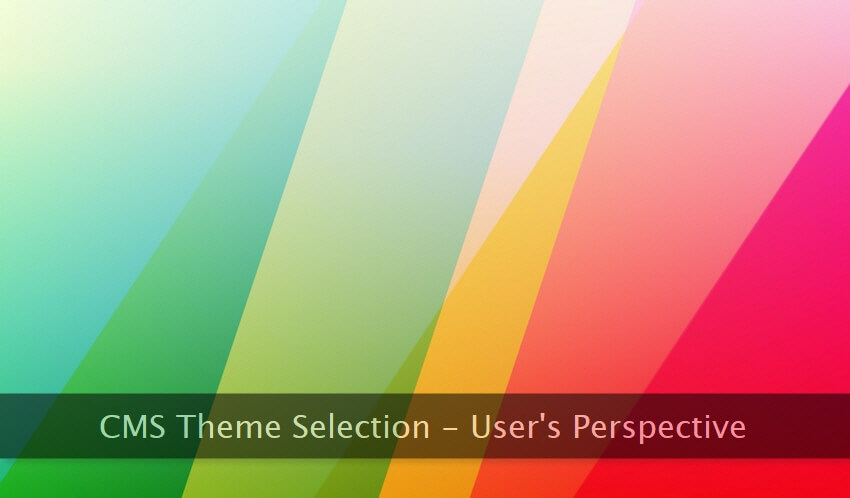Judging a Good CMS Theme [End User's Perspective]
Posted on: by Rajeev EdmondsRegardless of the content management system powering a website, a theme running on top of it is what primarily interacts with a developer as well as with the visitors. But here, we're going to talk about the person (website owner) sitting between the two.
We'll try to understand what a typical theme buyer (technically challenged) want and look for in a premium solution. This can help developers code better themes for their customer base.

Before we dive into discussing the likes and dislikes of a general theme buyer, we must agree that their preferences may be completely different or surprisingly strange from developer's perspective.
We talk about browser compatibility, critical rendering path, and minified assets, but a theme buyer has nothing to do with all this stuff. He is interested in something else. And, that's what we're going to discuss and understand today.
Pocket Friendly
Yes, almost every potential buyer wants to get a premium theme with a decent price tag. Unless you've managed to create an exceptional product with some truly unique and distinct features, putting a very high price tag right from day one isn't going to help.
Although I've no concrete data to back my claim, my personal observation says that putting a price tag like $29.99 performs better than $30. So, whatever price tag you're putting on a theme, do not round it off and use the former structure to get more sales.
Easy Installation
This is yet another important trait, a theme must exhibit to win the hearts of buyers. Minimal installation steps ensure the buyer starts instantly with a positive impression of the theme.
Often, complex and frustrating installation procedure (especially for technically challenged) leaves a bad impression despite having cutting-edge features.
If possible, ensure that the end user never has to use any FTP software while installing the theme. Changing directory permissions is another dreaded installation step, a common theme user never wants.
Automatic Updates
Almost all popular and well-developed content management systems support automatic updates both for themes and plugins. Take full advantage of this opportunity and see the difference.
But, here I must give a piece of advice. Instead of rolling out a fully automatic update, present a nag with an advice of taking a backup before theme user presses the update button.
So essentially, you must include a semi-automatic update feature to let the user know that a new theme version is available and one can start the update at his own convenience.
Easy Customization
This is one of the most important and mandatory theme features that can make you a millionaire in no time. All hugely successful themes are so because buyers find them quite easy to customize. Whether it's through dashboard interface or through an API (for power users), the highly customizable theme always please the user.
An average theme user wants both layout and color customization to be dead simple through point and click controls. If you can manage to integrate this functionality within your theme, you convincingly increase the probability of success for your theme.
Compatibility with Extensions
Often users dump a theme simply because it stops working when used in conjunction with a plugin used on the site. Smart theme developers always ensure that their theme plays nice with all the popular plugins available for the content management system.
Extensive testing and cooperation with plugin developers ensure your customer base is delighted when using your theme with their preferred plugins.
Impeccable 'After Sale' Support
And last but not the least, who doesn't like good after sales support regardless of the type of product they're using. Converting a lead and making the customer happy in crunch time are two different things.
Create a strong theme support system right from day one so that you don't face annoyed and frustrated customers. It can augment your existing sales giving a boost to your revenue.
All comments posted here are subject to the comment policy of this blog.